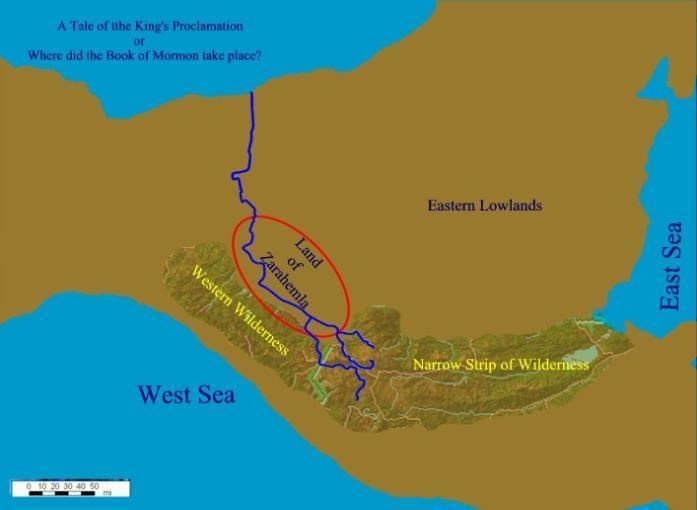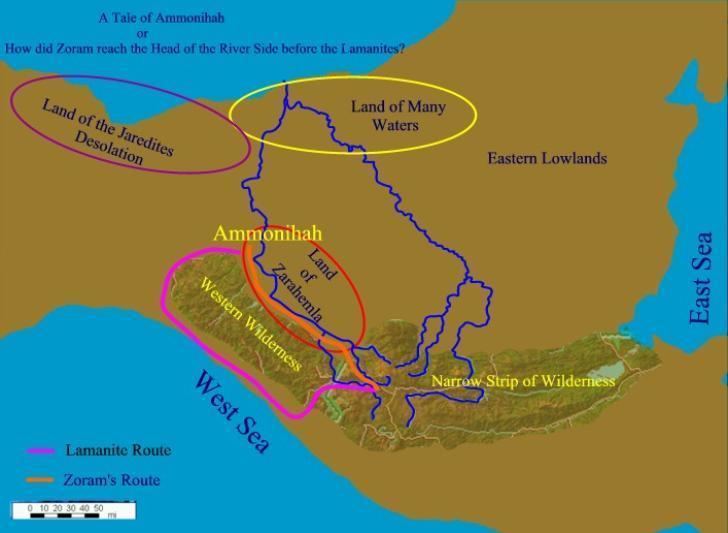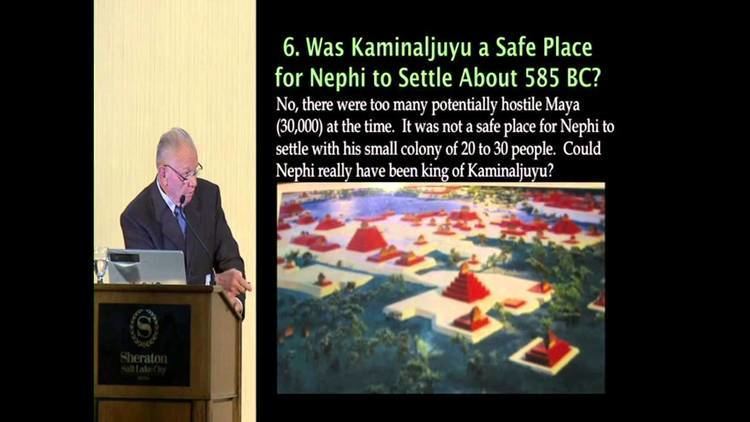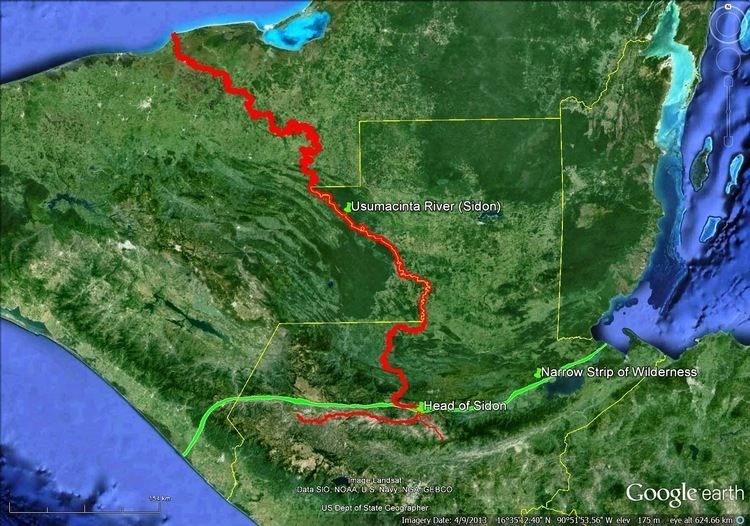 | ||
Similar Nahom, Jershon, Land of Antionum, Zarahemla | ||
The river sidon book of mormon evidence
The River Sidon is the only river mentioned by name, and is the most prominent river in the Book of Mormon. It was east of the great city of Zarahemla. There were several battles fought in and around this river. These include the battle between Captain Moroni and the Lamanite leader Zarahemna. This battle was ostensibly fought near the source or “head of the river Sidon”. Although the Book of Mormon never specifies the direction it flowed, the river Sidon did, and does, have specific battle locations, hills and valleys to the east and west of it.
Contents
According to the Book of Mormon, the river Sidon ultimately flows into a “sea”. The river Sidon is never mentioned in lands north of Zarahemla. Identifying the Sidon is crucial to locating the land of Zarahemla. In the Book of Mormon the river sidon was deep and swift enough to carry away semi-buoyant human carcasses.There were also crossing points along the river; and whether the river was crossed on foot or by canoe is heatedly debated by different proponents of the book of Mormon

Multiple LDS scholars have thought the Mulikites named the River Sidon after the Phoenician port city Sidon in present-day Lebanon. Evidence supports that the Mulekites were heavily influenced by the Phoenician society and likely took passage with them to America.

There are many different locations for where the events of the Book or Mormon took place each advocates a different river as being Sidon. Mesoamerica Grivilja . Proposed by John Sorenson and others Usamacintla Proposed by Kirk Magelby and others Heartland author Phyllis Carol Olive identifies the Book of Mormon River Sidon as the northward flowing Buffalo Creek / River of western New York. Olive asserts that the headwaters of Buffalo River (Sidon) were at one time fed with additional water from a lake that is now extinct. Mississippi. proposed by Rod Meldrum South America Magdelana river. Proposed by Benjamin Cluff. Panama hypothesis, the head of the River Sidon may well have been somewhere along Highway 55 in Columbia prior to the Great Earthquake.

The Heartland Model, presented by Rod Meldrum and the FIRM Foundation (of which he is the founder). In his article "The Mississippi; Could it have been the River Sidon," he analyzes the Book of Mormon text, as well as geological data which supports his model and hypothesis. In this article, he explains that although the Book of Mormon Index page used to say that the River Sidon flowed North, he confirms that this has since been removed from the page at the end of the book. He also goes on to show that the proposed land of Zarahemla being located in Montrose, IA, directly across the Mississippi from Nauvoo, IL, as Mormon Prophet, Seer and Revelator Joseph Smith originally claimed, as documented in the Doctrine and Covenants Section 125 Verse 3, fits right in with what the Book of Mormon teaches, which is that the River Sidon flows east of the City Zarahemla.

Once very interesting fact is that the only point where one could walk across the Mississippi River is at Keokuk, IA, literally 10 miles south of where the proposed City of Zarahemla is.

Below are the major criticisms of the Heartland Model's proposal of the Mississippi River being the ancient River Sidon of the Book of Mormon:

- The index in the Book of Mormon states that the Sidon River flowed north to a sea, but the Mississippi River flows south to the Gulf of Mexico and therefore could not have been the Sidon River of the Book of Mormon.
- The Sidon River could be crossed on foot but the Mississippi River is much to wide and deep to do so.
- The Sidon River had banks upon which wars took place and no such banks exist on the Mississippi River.
However, Rod asks, Did the Sidon River flow north? In response to that question, he says, "What we know scripturally is that the river ran primarily either north or south as it had east and west sides or banks. Alma 2:15, 2:17, 6:7, 16:7,43:53 and 49:16 specify an east bank, and Alma 8:3, 43:27, 43:32, 43:53 indicates a west bank. There is no mention of north or south banks. Even so, rivers often make significant changes in direction over short stretches as they wind around geographic obstacles. One should not assume the River Sidon, or any lengthy natural river, would run exclusively in exactly one direction."
Rod goes on to explain that the river needed to be suitable for shipping, as Heleman 3:10 points out, and that there needed to be a head of the river, where as to complement Alma 22:29. He goes on to say that Alma 22:29 is completely congruent with the Heartland Model; "if the place of first landing was the Gulf Coast of North America and the proposed location for Zarahemla (according to the Heartland Model) is across the Mississippi River from Nauvoo, IL (named by the Lord "Zarahemla" in D&C 125:3), then certainly the 'head' was in the northern parts of the land.
So the 'head' of the Sidon river of the Book of Mormon has two possible definitions, one at the commencement of a stream or river and one which is defined as the location where two branches or tributaries of a river meet, or their confluence. Which definition did the Book of Mormon authors and translator mean and is there a scriptural basis for the idea of the 'head' of a river being a junction of two or more rivers? In the Old Testament in Genesis 2:10 it states, "And a river went out of Eden to water the garden; and from thence it was parted, and became into four heads." (see also PoGP Moses 3:10 reference note b) There is a reference note b at 'parted' in the LDS King James Version of the Bible which reads "HEB (Hebrew) - divided into four heads (branches)" clearly indicating that the 'heads' of each of these four rivers were at the junction of two or more rivers.
A second scriptural basis for understanding that the word "head" could designate a "junction" can be had from several passages wherein attempts are made to cut off or "head" something (an army or flocks) at a certain junction. Such occurrences can be found in Alma 17:32, 46:32, 50:33-34, 51:29-30, and Hel. 1:28-30.
Therefore, there is scriptural evidence to support the use of 'head' of a river as where two or more rivers join, making this a perfectly legitimate choice among alternative definitions. This also provides further insight into Alma 56:24-25 which reads, "They durst not pass by us with their whole army, neither durst they with a part, lest they should not be sufficiently strong and they should fall. Neither durst they march down against the city of Zarahemla; neither durst they cross the head of Sidon, over to the city of Nephihah." It is understandable that the Lamanite army would be afraid to battle the Nephite army, or go against the Nephite capital city Zarahemla, but why would crossing a river at its "head" or source (presumably a stream) cause such dread? The simple answer could be that the "head" was a junction of two rivers, thereby making it a fearfully difficult and dangerous point to attempt a crossing.
We can only speculate as to which of the two definitions were meant by the Book of Mormon authors. But it appears that each definition is valid. This being the case, it cannot be said with confidence that the river Sidon flowed North; It could have been flowing in either direction. Therefore, the Mississippi River, based on this criterion, is a valid alternative to be considered to be the Book of Mormon's "River Sidon."
